The Bugs Bunny Crazy Castle

- Japanese release in September 1989
- North American release in March 1990
- European release in 1990
- North American release in 1998
- Developed by Kemco
Crazy Stupid Love

I hate Kemco’s Crazy Castle series. It’s not fun or interesting. It also has one of the most complicated release history around. But we must talk about the first game released on Game Boy. Why? Because it’s the first Game Boy title to do two things:
- It is the first action title to feature large sprites;
- It is arguably the first multi-platform release, being made available on NES and Game Boy, albeit with different levels.
It struck a chord with the public and sold more than a million copies. Being an early release certainly helped; it had little competition and featured a very well-known licensed character. A whole bunch of future titles would do the exact same thing, but The Bugs Bunny Crazy Castle was the first. For that, and certainly not for its brain-dead gameplay, it’s essential.
It was eventually rereleased as a Player’s Choice title in 1996 (that’s the only way I know it sold more than a million copies) at the nadir of the Game Boy’s history, giving the game a second life.
The Meandering Story of Its Rotating Cast of Franchises
Kemco gets the right to make a Roger Rabbit game for the Famicom Disk System. So far, so good. They create the game and release it in February of 1989, six months after the movie is released in the US but just two months after the release in Japanese theatres in December of 1988. The timing is so tight it’s possible they started developing the game as a blank slate before they had a franchise to put on the game.
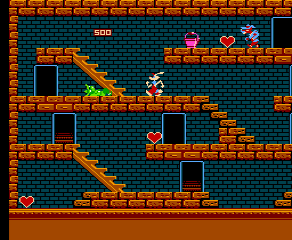 Roger Rabbit
Roger Rabbit Bugs Bunny
Bugs BunnyNow comes the time to get your throwaway game to North America. But in North America, Kemco did not hold the video game rights for the Roger Rabbit movie. Another game based on Who Framed Roger Rabbit was instead released to coincide with its VHS release, a really big event back in the fall of 1989. It’s not the same game as the Japanese one: it was published by LJN and developed by Rare of all people. Kemco did release its game in North America, but as The Bugs Bunny Crazy Castle. They ported the game to cartridge (from an FDS diskette) and changed the sprites into Looney Tunes characters. How did we end up in this situation?
It’s not necessarily a simple answer of LJN having snatched the rights in North America before Kemco could localize their version. It’s very possible that Kemco being a Japanese company, they concentrated on getting the game out in Japan without ever really thinking about a worldwide release. It might be possible that Kemco did not think it was worth paying for the rights to a movie out of American theatres, and they did not consider coinciding their game with a VHS release. It might be possible that the movie being a big hit, the price for the rights went up and shut out Kemco. It might be possible that the game being out, the American rights holder saw the Japanese version and thought it was inappropriate. I don’t know. The rights to Roger Rabbit himself are convoluted, to say the least; Spielberg has to this day a veto on anything Roger Rabbit related (the movie version of the character: Roger Rabbit was adapted from a novel), we can only presume at the complicated discussions that left us with the situation we’re in with the Crazy Castle games.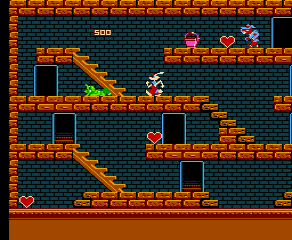
Kemco seemed to have had the avant-garde idea of releasing a version of their Famicom/NES game for the portable Game Boy. Nobody had done that on Game Boy before. Tennis & Baseball by Nintendo were adaptations of old Famicom sports titles. Hyper Lode Runner, which came out in Japan a couple of weeks after Kemco’s game was a new version of an old PC title. But a contemporary licensed game, released on Nintendo’s two consoles around the same time, that was still new ground. So we have the Japanese release in the fall of 1989 of Mickey Mouse for Game Boy. Wait a minute? Wasn’t this article about The Bugs Bunny Crazy Castle? Where does Mickey Mouse come into play? Kemco did not have the same licence in different regions, so they just changed the licensed characters in their games. See this handy chart:
| Japanese Release | North American Release | European Release | Comments |
|---|
| Roger Rabbit | The Bugs Bunny Crazy Castle | Not released | The original FDS version and the NES adaptation. |
| Mickey Mouse | The Bugs Bunny Crazy Castle | The Bugs Bunny Crazy Castle | The game we are talking about here: it’s really a sequel, not a port of the previous game. |
| Mickey Mouse II | The Bugs Bunny Crazy Castle 2 | Hugo or Mickey Mouse | The second Game Boy game, third overall; by the way, who the hell is Hugo? |
| Mickey Mouse III: Balloon Dreams | Kid Klown in Night Mayor World | Not released | A late NES platformer, only considered in the series because of its Japanese numbering. |
| Mickey Mouse IV: The Magical Labyrinth | The Real Ghostbusters | Garfield Labyrinth | Back to Game Boy, with every market having a different licence! Oh boy! |
| Mickey Mouse V: The Magical Stick | Mickey Mouse: Magic Wands! | Mickey Mouse V: Zauberstaebe! | A Game Boy release, it sold a million copies in North America and got rereleased in 1998. It shows how strong the Mickey Mouse brand is. |
| Let’s Go!! Kid: Go! Go! Kid | Not released | Not released | They clearly no longer had the Mickey Mouse licence. It released without any licence attached. |
| Bugs Bunny: Crazy Castle 3 | Bugs Bunny: Crazy Castle 3 | Bugs Bunny: Crazy Castle 3 | A Game Boy Color enhanced version of Go! Go! Kid; it renumbered the series in Japan and picked up Bugs Bunny for every market. |
| Bugs Bunny in Crazy Castle 4 | Bugs Bunny in Crazy Castle 4 | Bugs Bunny in Crazy Castle 4 | A Game Boy Color only release. |
| Woody Woodpecker in Crazy Castle 5 | Woody Woodpecker in Crazy Castle 5 | Woody Woodpecker in Crazy Castle 5 | A GBA game, it seems they lost the Bugs Bunny licence and went with something cheaper. Woody Woodpecker is not a hot licensing opportunity. |
So we have a game series that started out as a somewhat hard FDS Roger Rabbit cash-in that became an easier series of Game Boy Mickey Mouse games in Japan re-skinned as The Bugs Bunny Crazy Castle in North America. It’s all fitting, considering Bugs and Mickey both appeared in Roger Rabbit. 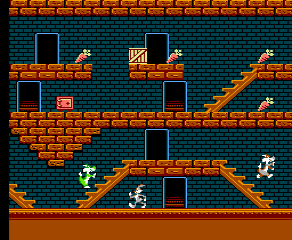 You’d think Kemco would re-skin the Crazy Castle games with Bob Hoskins in Australia or something.
You’d think Kemco would re-skin the Crazy Castle games with Bob Hoskins in Australia or something.
Lode of Crap
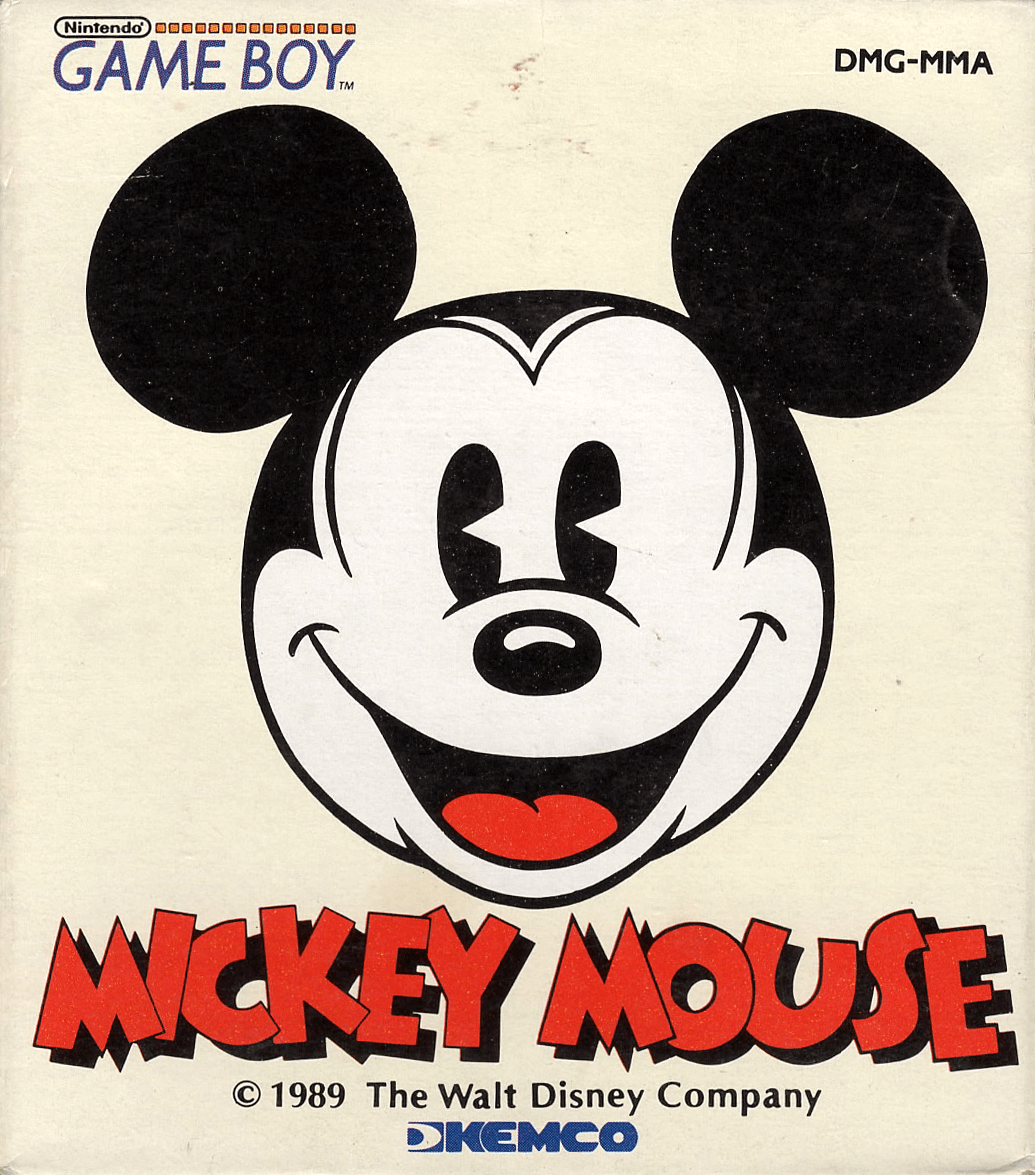 The Apple ][ version of Lode Runner
The Apple ][ version of Lode RunnerRoger Rabbit, and thus the whole Crazy Castle series, is basically a ripoff of Lode Runner. A game by Douglas E. Smith, Lode Runner was released on microcomputers in 1983, and published by Brøderbund. You’re a stick figure, running around in a side view labyrinth of platforms and ladders, with the objective of gathering all the gold strewn around the level to move on. But beware the enemy stick figures that walk around! You have no way of defeating them; your only tool against them are holes you can dig to stop them for a very short time. This allows you to walk over their head and continue along your path. It’s a platformer of its time, made well before Super Mario Bros. changed everything: you have to get really intimate with its AI mechanics to achieve any kind of success. Play it today and you’ll be wishing for a jump button after one level. What is interesting for us is the Hudson Soft port for Famicom released in 1984. It featured different, larger levels with scrolling since the Famicom could smoothly scroll while microcomputers couldn’t. It introduced no new concepts to the game, still featuring a character moving across a side view labyrinth in search of gold, digging holes to temporarily stop his enemies. The Family Computer (the Japanese version of the NES) had a dearth of releases for its first two years on the market but was very successful as a console. Nintendo was kind of caught with their pants down. So a game like Lode Runner, which in all honesty is not that fun, sold millions of copies in Japan and became a beloved classic even though its kind-of terrible. The best comparison I have is to the first NES Teenage Mutant Ninja Turtles game and its revered status here in North America. It’s bad, we all know it’s bad, but we played it too much not to love it. Sometimes love is illogical.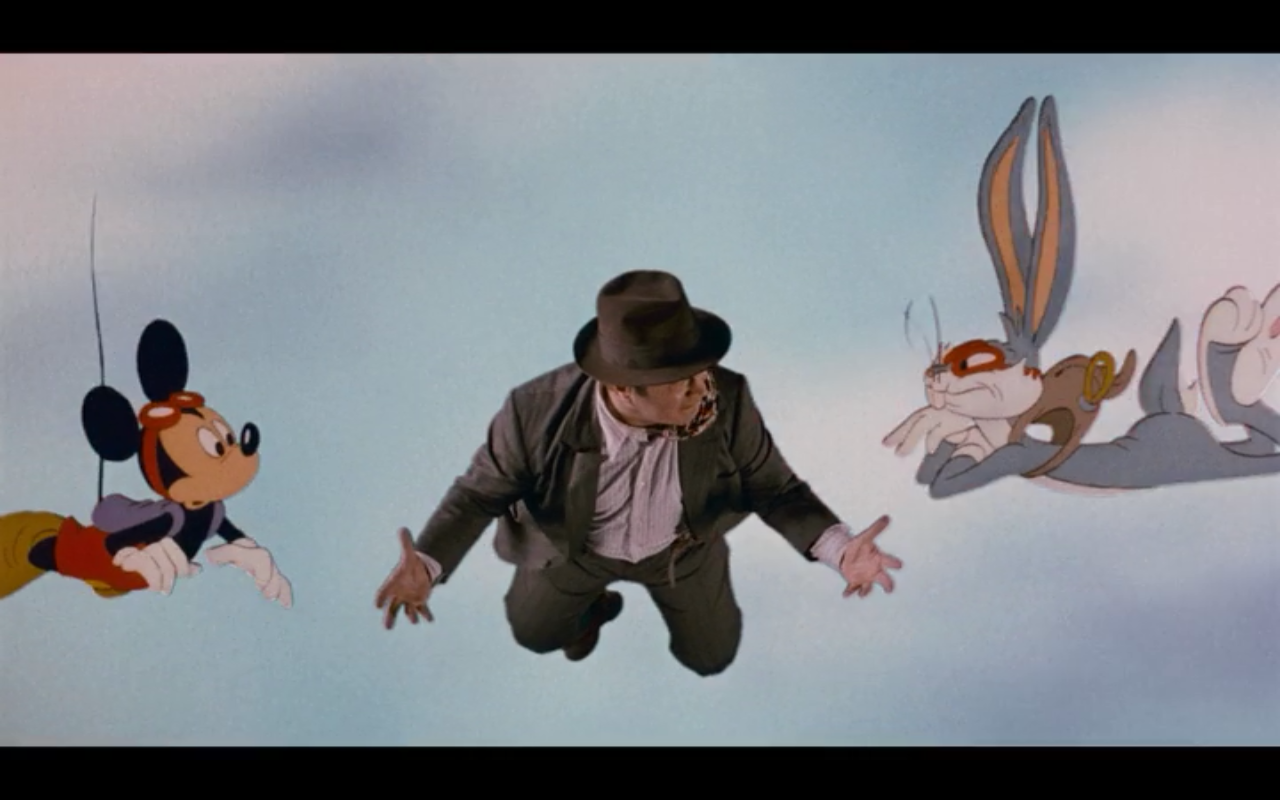 Roger Rabbit on Famicom Disk System
Roger Rabbit on Famicom Disk System
The developers at Kemco made an extension of Lode Runner’s concept. You run around for hearts in each level instead of gold, it replaces ladders and tightropes with staircases and pipes, and instead of digging holes to defeat your enemies you push 100-ton weights on them or throw punching gloves. Just like the cartoons! Once hit, enemies disappear for good in a puff of smoke, making Crazy Castle much more manageable than Lode Runner’s pacifist brand of gameplay. Even with those changes, Roger Rabbit on FDS is not an easy game. It’s easier than Lode Runner, but it’s still a mean game. Japanese audiences would have been accustomed to it though; they had years of Lode Runner derivatives under their collective belt in 1989. In North America we saw most of those games but they were never popular. This meant we were collectively not used to this brand of gameplay. So The Bugs Bunny Crazy Castle on NES made one big concession: the enemies are slower.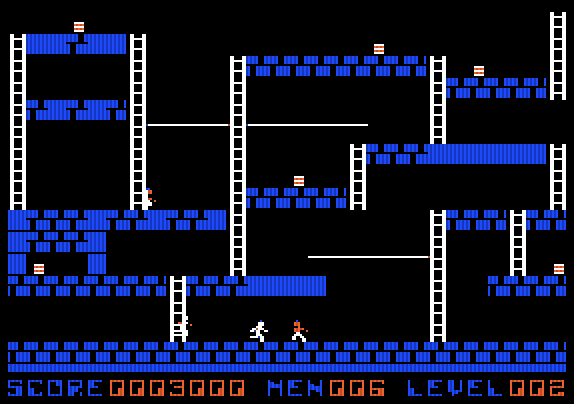
We now get to our game of interest: the Game Boy version. You might be tempted to think it’s a straight port with the same levels, but it’s not. It’s more akin to a sequel. It has the same mechanics (staircases, punching gloves and 100 ton weights) but new levels. The graphics are also redrawn and are honestly much better looking than on NES. Remember that we have two versions of the game: the Japanese Mickey Mouse and the North American version. I’ve looked carefully and I do not see any difference between the Japanese Mickey Mouse and the North American Bugs Bunny (except for the whole Mickey Mouse thing, obviously). So both games are much easier in enemy placement, much simpler in level design than the previous FDS/NES games and that was considered sufficient to please everyone. So the only difference between both Game Boy releases is a simple palette swap, which will become this forsaken series’ best remembered characteristic: palette swaps as far as the eye can see!
First With Big Sprites
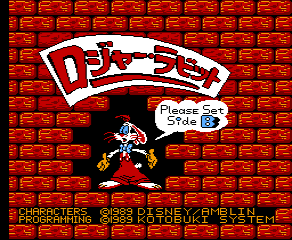 Here’s Roger, and Bugs, and Mickey, and Bugs again. Note that they all have very similar pixel height.
Here’s Roger, and Bugs, and Mickey, and Bugs again. Note that they all have very similar pixel height.The Game Boy features a 160 by 144 pixels screen. Even by 1989 standards, this was low. Console games used CRT TVs, which featured an interlaced 480 or 576 vertical lines signal. I don’t want to get into the nitty-gritty complexities of interlaced signals, but I need to mention that a console like the NES pushed 256 by 240 pixel images (most TVs did not display the top or bottom 8 rows of pixels, which means you have visible 224 rows) and did not interlace another image. Consoles simply used the regular non-interlaced resolution of a TV. Even with these caveats, consoles had a much higher resolution than the Game Boy. This is not even talking of PC gaming, which had started using the VGA graphics standard and its roomy 640 by 480 pixels non-interlaced resolution in 1989.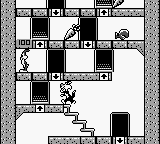
When bringing the concept of Roger Rabbit to the Game Boy, Kemco chose not to resize the characters, keeping them at the same pixel count. Every character used as many pixels as on NES. So here, with this underrated puzzle-action game, we have one of the most important decisions ever taken regarding Game Boy: characters should not get smaller, you just won’t see as much of the level around them. I’ve talked about this already in my Mega Man I article but here we have the very first example of it. In a game based on environmental hazards like Mega Man, it’s a tough nut to crack. With a simple concept like Crazy Castle, where you’re on one vertical plane and you’re unable to jump, facing usually one enemy at a time, it made a lot of sense to keep Mickey and Bugs with the same level of detail as on a TV. The only thing you needed to be careful about was your level design; make sure your levels reflect your limited view and you’re good. This simple decision will immediately become the standard for all future platformers on Game Boy.
Easier on Game Boy? Not With Those Controls

The Bugs Bunny Crazy Castle is not giving you a life bar or a second chance; you need to gather all eight carrots in each level in one attempt. If you die by touching any of the enemies on the map, you need to start that level again with zero collected carrots. So it’s one of those games that has lives where it makes no sense having them. There are passwords so you can always continue trying the same level, and you never reuse your progress within a level, you always start from zero. So why does it have lives? Because games back then had to have lives, that’s why.
One interesting feature is what the game calls video. It’s a way to show you a replay of your last played level. There’s no mystery to how they did it; the game has zero randomness so just repeating your inputs can replay exactly what happened. It’s still impressive, even with this simple explanation.
Since the game is unforgiving, it should have generous controls to help you; instead they’re as unforgiving as the game. The second you go up a staircase you can’t cancel it. You actually move forward instead of staying still if you press up or down when not in front of stairs. This means that you could be trying to evade an enemy by going up steps but since you’re not in the exact spot to go up you instead rush headlong into that enemy.
The game has unforgiving mechanics and controls but it does not mean it’s hard. I skipped around using passwords and I thought it was suddenly going to be too hard to beat but levels stay surprisingly manageable. I even beat the last level, level 80, after five or six tries.
Conclusion
Making a dumbed down, licensed, easy version of a harsh 1983 game worked. The Bugs Bunny Crazy Castle on Game Boy in 1990 ended up in the same position as Lode Runner on Famicom in 1984. It was not particularly good but what else are you going to buy? It sold at least a million copies. It’s as if Kemco planned it that way. I bet they knew that it was better for them to release a simpler game early than a more complicated game later. They hit the ground running when everybody else was just getting started. Their next Game Boy release, The Sword of Hope, would release in December of 1989 two months later and indeed be a more complicated RPG/Adventure game hybrid.
Play The Bugs Bunny Crazy Castle; you’ll be able to see what a lot of people were playing early on in the Game Boy’s life. They had very few other choices until 1991. To them, and to us by extension, it’s essential.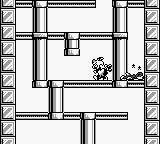
This article was first published on the .
This article was last modified on the .